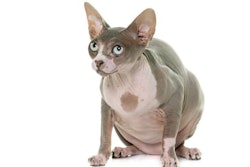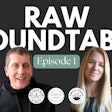
Parents scold children not to feed people-food to the dog, yet the line between the two keeps getting blurrier. Human and pet food trends have been converging for years. Premium pet foods grew in market share along with this pet humanization phenomenon. At first this meant mainly the ingredients. In 2016, David Sprinkle, publisher and research director at Packaged Facts, noted that the time gap between a trend hitting the human market and the pet space had receded. To some extent, pet trends may even feedback and influence human trends. Now many pet products are specifically designed to look like human consumables, from gourmet cookies to jerky. Even the packaging looks like that of human food and the marketing follows strategies similar to those of baby products, health foods and other human items.
“There used to be a delay in human food trends making their way into the pet food space,” Ryan Wilson, vice president of marketing for Better Choice Company, parent company of Halo Pet, said in an email. “However, in the last five to ten years, we have seen that delay tighten. We are now seeing human food trends translate to pet at the same time. Due to this convergence, we closely watch the human food landscape and leverage these insights in our current product portfolio and in our innovation pipeline.”
Sustainability movement in pet food
Some of the company’s new products were specifically designed to resemble human products in the consumer packaged goods space. Beyond the food itself, pet food companies look to human trends in other aspects of the business. Scientific and market research provides evidence that pet owners tend to be more conscious of the ecological and social ramifications of their purchases. As the effects of environmental and social disturbance mount, pet owners have become increasingly aware of how their actions affects other animals, including Homo sapiens.
“Some recent trends that have been brought from the human space into the pet space are responsible sourcing certifications like GAP and MSC, packaging sustainability and upcycling,” Wilson said.
These certifications are one way pet food companies can assure consumers that pet foods and treats are made from healthy ingredients and handled safely. Pet owners want to know that their purchases don’t forfeit the ability of future generations to meet their own needs. Upcycling refers to using existing materials, especially those that would have been discarded, to make a value-added product. If you made a birdhouse from a milk carton in grade school, that was upcycling. Upcycling goes far beyond arts and crafts now, with whole businesses devoted to finding and repurposing everything from old gym floors to misshapen conveyor belts. In the cases of the food system, otherwise unsaleable consumables become ingredients in new foods, human or pet.
Unused human food items seem a natural fit for pet food. Dogs and cats have eaten what we didn’t since before Stonehenge’s grand opening. Kids are still prone to reducing food waste by feeding unwanted portions to the dog. Like a kid at the dinner table, the human food system often rejects foods it thinks look funny. Misfit fruits and veggies may not fit through processing machines or people won't buy them fresh, for example. However, using crooked carrots and twisted ‘taters to make pet food doesn’t just fulfill the dinner-time adage of waste-not-want-not. Reducing food loss by turning it into pet food ingredients fights the global threat of a destabilized climate.

















